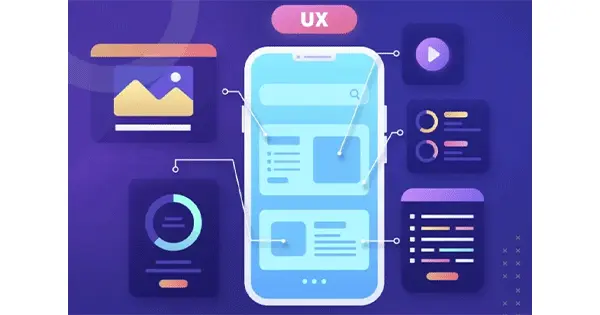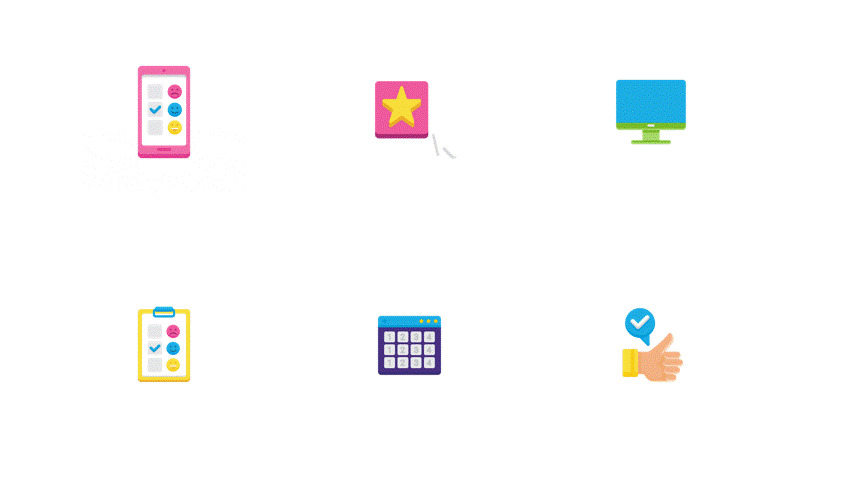Key Factors that Shape UX/UI Design Trends in 2025
Written by UIDesignz Nov 1, 2022 13 min read
Last updated: Dec 30 2024

Welcome to our blog, where we embark on an exciting journey into the realm of UX/UI design! As we step into the year 2025, the digital landscape continues its rapid evolution, placing an even stronger emphasis on user experience. In this article, we will delve into the fundamental factors that are shaping the UI/UX design landscape this year. From emerging technologies to evolving user expectations, we'll uncover the vital components that designers must consider to craft engaging and user-friendly digital experiences. Whether you're an experienced designer or just starting your journey in UX/UI, keep reading to explore the critical factors that will define successful design trends in 2025.
Before getting in depth of the key factors, let’s get some information about the key elements of UX Design. UX (User Experience) design includes several key elements that are essential for creating a positive and effective user experience. Here are some of the key elements of UX design:
User Research
Understanding your target audience is extremely important. Conduct research to gather insights into user behaviors, preferences, and needs. This helps in designing solutions that align with user expectations.
Usability
Ensure that your design is easy to use and navigate. Intuitive navigation, clear labeling, and straightforward interactions are crucial for a good user experience.
Information Architecture
Organize and structure content logically. Create a clear hierarchy of information to help users find what they're looking for easily.
User Interface (UI) Design
The visual aspect of UX design is important. It involves creating a visually appealing and cohesive interface that aligns with the brand and offers a pleasant aesthetic experience.
Interaction Design
Focus on how users interact with your product. Design intuitive and responsive interactions, such as buttons, forms, and gestures, to ensure a seamless user journey.
By focusing on these key elements, UX designers can create digital products and interfaces that not only meet user needs but also exceed their expectations, leading to enhanced user satisfaction and loyalty.
Table of Contents
1. Personalization
In the ever-evolving world of UI/UX design, personalization stands out as a key factor in shaping the trends of 2024. With the advancements in generative AI, designers can harness the power of algorithms to analyze user data and deliver tailored experiences. Personalization involves different things. For instance, using big letters in UI/UX design makes it easier for everyone to read. Also, including card-like elements helps organize information and makes it easier to move around. People are still talking about whether light or dark modes are better, and UX/UI designers are trying to give options that work for everyone while keeping things accessible. Augmented reality is a cool way to make UI/UX more exciting and interactive. To figure out what users want, we do research to help us make design decisions. We use tools like Adobe XD and Figma to create and work together on designs. As trends change, personalization is still important and helps designers make digital experiences that really connect with users in 2024.
Personalization as a key factor for UX/UI design trends in 2023 offers several benefits for both users and businesses:
Enhanced User Experience
Personalization allows users to receive content and experiences tailored to their preferences, needs, and behaviors. This leads to increased satisfaction, improved engagement, and higher retention rates.
Improved Conversion Rates
Personalization has been shown to have a positive impact on conversion rates. By delivering targeted and personalized experiences, businesses can effectively influence user behavior and drive conversions.
Increased Customer Loyalty
Personalization fosters a sense of connection and loyalty among users. When users feel that a platform understands their unique preferences and delivers tailored experiences, they are more likely to develop a stronger affinity for the brand or product.
Time and Effort Savings
Personalization can save users time and effort by presenting them with relevant information and options upfront. By understanding user preferences, interfaces can prioritize and streamline content, reducing the need for users to search or navigate through irrelevant information.
Data-Driven Insights
Personalization relies on collecting and analyzing user data. By leveraging data-driven insights, businesses can gain a deeper understanding of user behavior, preferences, and trends.

2. User- First Approach
In 2025, the primary focus in UX/UI design trends continues to be putting the user at the forefront.UX/UI Designers are giving top priority to understanding and meeting the needs, preferences, and goals of users to make digital experiences that are both captivating and user-friendly. To do this, designers are digging deep into user behavior and doing extensive research to truly connect with their target audience. By adopting this user-centered approach, designers make sure that interfaces are easy to use, information is easy to find, and interactions feel natural. They're also using user testing and feedback extensively to improve and perfect their designs, ensuring they meet user expectations. By keeping the user at the core of the design process, designers can craft meaningful and delightful experiences that ultimately boost user satisfaction, loyalty, and business success in 2025 and beyond.
The User-First Approach for UI/UX design trends in 2025 provides numerous benefits for both users and businesses:
Enhanced User Satisfaction
By prioritizing user needs, preferences, and goals, the User-First Approach ensures that interfaces are intuitive, user-friendly, and cater to user expectations.
Increased User Engagement
The User-First Approach focuses on creating engaging experiences by considering factors such as aesthetics, interactivity, and personalized content, which can lead to higher user engagement levels.
Improved Usability
By conducting user research, employing user testing methodologies, and incorporating user feedback, designers can identify pain points, streamline workflows, and optimize the overall usability of the interface.
Higher Conversion Rates
A User-First Approach can lead to improved conversion rates. By understanding user behavior, preferences, and motivations, designers can create interfaces that effectively guide users towards desired actions, such as making a purchase, subscribing to a service, or signing up for a newsletter.
Increased Brand Loyalty
Prioritizing the user experience through a User-First Approach fosters a sense of trust and loyalty among users.
3. Data Privacy And Security
Data privacy and security have become crucial considerations in UX/UI design trends in 2025 information. UX/UI designers are prioritizing data privacy and security by implementing robust security measures and following best practices. Clear privacy policies, secure authentication methods, and encrypted data transmission are essential components of trustworthy user experiences. Additionally, designers are integrating transparency into the way they collect and utilize data, giving users the ability to manage their personal information. By actively addressing concerns about data privacy and security, designers can build trust, boost user confidence, and create lasting connections with their audience. Ultimately, in 2025, safeguarding data privacy and security remains a critical priority for designers, essential for meeting user expectations and upholding the integrity of their UX/UI designs.
Data privacy and security as a key factor for UX/UI design trends in 2024 provide numerous benefits for both users and businesses:
User Trust and Confidence
By implementing robust data privacy and security measures, businesses can assure users that their sensitive data is safe, building a strong foundation of trust between the user and the brand.
Protection of Personal Information
Data privacy and security measures safeguard user data from unauthorized access, breaches, or misuse. By implementing encryption, secure authentication methods, and data storage best practices, businesses ensure that user information remains confidential and protected from potential threats.
Compliance with Legal and Regulatory Requirements
Adhering to data privacy and security guidelines ensures that businesses are in compliance with legal and regulatory frameworks. By prioritizing data privacy and security, businesses can avoid legal issues, fines, and reputational damage associated with non-compliance.
Mitigation of Risks and Data Breaches
By implementing robust security measures, businesses can mitigate the risks of data breaches, unauthorized access, and cyber attacks.Proactive measures, such as regular security audits and vulnerability assessments, can help identify and address potential risks.
Enhanced User Experience
When users feel that their personal information is secure, they can interact with the platform or application without concerns or hesitations. This leads to a more positive user experiences, as users can focus on their tasks and goals without worrying about privacy or security risks.

4. Accessibility
Accessibility has emerged as a crucial and non-negotiable key factor in UX/UI design trends in 2025. Designers are recognizing the importance of creating inclusive digital experiences that cater to users of all abilities. By following accessibility standards like WCAG (Web Content Accessibility Guidelines), designers guarantee that their interfaces are usable, understandable, and resilient for everyone. This involves factors such as offering descriptions for images, selecting color schemes with suitable contrast, enabling keyboard navigation, and supporting screen reader compatibility. By giving importance to accessibility, designers broaden the reach of their interfaces, making it easier for individuals with disabilities to effortlessly access and engage with digital content. In 2025, accessibility is not just an add-on; it's a fundamental aspect of the design process, guaranteeing equitable access to information and services while improving the overall user experience.
Accessibility as a key factor for UX/UI design trends in 2025 offers several benefits for both users and businesses:
Inclusivity
Accessibility ensures that individuals with disabilities can access and use digital interfaces without barriers. By designing with accessibility in mind, UX/UI designers create inclusive experiences that cater to a diverse range of users, including those with visual impairments, hearing impairments, motor disabilities, cognitive disabilities, and more. This fosters a sense of inclusivity and equal access for all users.
User Satisfaction
Accessible designs are often more user-friendly and intuitive, resulting in higher user satisfaction. Satisfied users are more likely to engage with your products and services.
Innovation
Accessibility challenges can drive innovation. Designers are forced to think creatively to address accessibility issues, which can lead to innovative solutions that benefit all users.
Galobalization
Accessible design can help organizations expand globally by accommodating diverse user needs and preferences across different cultures and languages.
Improved SEO
Accessible websites often rank higher in search engine results because search engines favor websites that provide a better user experience. This can lead to increased organic traffic and visibility for your digital assets.
Improved User Experience
Accessible design often results in a better user experience for all users, not just those with disabilities. Features like clear navigation, logical information structures, and adaptable interfaces benefit everyone by making interactions more straightforward and efficient.
Emotional Connection
In 2025, an emotional connection is emerging as a pivotal aspect of UX/UI design trends. Designers are increasingly realizing the significance of crafting interfaces that can evoke positive emotions and forge meaningful relationships with users. By integrating visually pleasing aesthetics, compelling narratives, and considerate animations, designers can trigger emotions like happiness, enthusiasm, and confidence in users. This emotional design approach serves to add a human touch to the digital encounter, making users feel more attached and involved with the interface. When users undergo a positive emotional journey, they are more likely to establish an enduring connection with the brand or product. In the year 2025, designers are harnessing the power of emotional connection to shape unforgettable and influential experiences that not only cater to user requirements but also create a lasting impact, encouraging user loyalty and advocacy.
Emotional connection as a key factor for UX/UI design trends in 2023 offers several benefits for both users and businesses:
User Engagement
Creating an emotional connection with users enhances their engagement with digital interfaces. When users feel emotionally connected, they are more likely to spend time on a platform or website, exploring its features and content.
Enhanced User Satisfaction
Positive emotions associated with a well-designed interface contribute to higher user satisfaction. Users enjoy using interfaces that evoke joy, excitement, or trust, leading to a more gratifying experience.
Improved User Retention
Emotional connections foster user loyalty. When users have an emotional bond with a brand or product, they are more likely to return and continue using it over time, reducing churn rates.
Competitive Advantage
Brands and products that prioritize emotional design stand out in a crowded market. This can give them a competitive edge and help them gain market share.
Differentiation
Emotional design allows brands to differentiate themselves from competitors. It helps create a unique identity and narrative that resonates with users.
In summary, emotional connection as a key factor for UX/UI design trends in 2023 offers benefits such as increased user engagement and satisfaction, brand loyalty and advocacy, higher conversion rates, memorable experiences, differentiation in a competitive landscape, and valuable feedback for design refinement. By designing interfaces that evoke positive emotions, businesses can create meaningful and impactful experiences that establish a strong bond with users, driving long-term success and customer loyalty.
Continuous User Feedback And Iteration
This feedback-centered approach empowers designers to make continuous improvements and refinements, ensuring that the final product aligns with user expectations and offers an optimal user experience. Through continuous iteration driven by user feedback, designers can pinpoint pain points, identify areas that require enhancement, and fine-tune the user interface and overall user experience accordingly. By wholeheartedly embracing this iterative process, designers can craft interfaces that are intuitive, user-friendly, and in harmony with user needs. This, in turn, enhances user satisfaction and engagement throughout the year 2023. Here are some benefits of Continuous User Feedback as a key factor for UX/UI design trends in 2024.
Enhanced User-Centricity
Continuous user feedback keeps the focus on the needs and preferences of the users, ensuring that design decisions align with user expectations.
Improved User Satisfaction
By addressing user feedback promptly, designers can resolve issues and make improvements that lead to higher levels of user satisfaction.
Reduced Risk of Costly Mistakes
Early and ongoing feedback helps catch usability issues and design flaws before they become expensive problems to fix.
Greater Accessibility
Feedback from users with disabilities can inform accessibility enhancements, making digital experiences more inclusive.
Enhanced Usability and Efficiency
Continuous improvements based on user feedback result in interfaces that are easier to use and more efficient, benefiting both users and businesses.

Conclusion
In 2025, a crucial aspect of UX/UI design trends is the ongoing collection of user feedback and the iterative design process. Designers recognize the significance of consistently gathering insights and input from users, not only during the initial design phase but also throughout the entire product lifecycle. As UX/UI design trends evolve, these key factors will continue to shape the digital landscape in 2025 and beyond. By embracing these principles, designers can create meaningful, user-centric, and impactful experiences that resonate with users, drive loyalty, and contribute to the success of businesses and brands. Whether you're a seasoned designer or just beginning your UX/UI journey, these trends are guiding lights on the path to crafting exceptional digital experiences.
To avail our offered services by Professionals kindly Contact Us.





